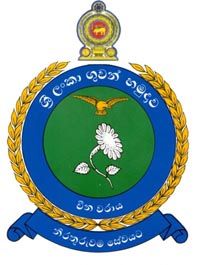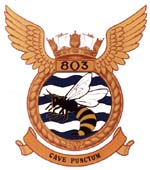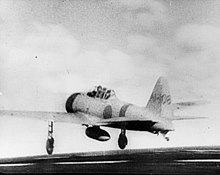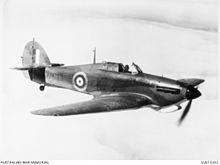
HMS Hermes was a British aircraft carrier built for the Royal Navy and was the world's first ship to be designed as an aircraft carrier, although the Imperial Japanese Navy's Hōshō was the first to be commissioned. The ship's construction began during the First World War, but she was not completed until after the end of the war, having been delayed by multiple changes in her design after she was laid down. After she was launched, the Armstrong Whitworth shipyard which built her closed, and her fitting out was suspended. Most of the changes made were to optimise her design, in light of the results of experiments with operational carriers.

HMS Victorious was the third Illustrious-class aircraft carrier after Illustrious and Formidable. Ordered under the 1936 Naval Programme, she was laid down at the Vickers-Armstrong shipyard at Newcastle upon Tyne in 1937 and launched two years later in 1939. Her commissioning was delayed until 1941 due to the greater need for escort vessels for service in the Battle of the Atlantic.

HMS Illustrious was the lead ship of her class of aircraft carriers built for the Royal Navy before World War II. Her first assignment after completion and working up was with the Mediterranean Fleet, in which her aircraft's most notable achievement was sinking one Italian battleship and badly damaging two others during the Battle of Taranto in late 1940. Two months later the carrier was crippled by German dive bombers and was repaired in the United States. After sustaining damage on the voyage home in late 1941 by a collision with her sister ship Formidable, Illustrious was sent to the Indian Ocean in early 1942 to support the invasion of Vichy French Madagascar. After returning home in early 1943, the ship was given a lengthy refit and briefly assigned to the Home Fleet. She was transferred to Force H for the Battle of Salerno in mid-1943 and then rejoined the Eastern Fleet in the Indian Ocean at the beginning of 1944. Her aircraft attacked several targets in the Japanese-occupied Dutch East Indies over the following year before Illustrious was transferred to the newly formed British Pacific Fleet (BPF). The carrier participated in the early stages of the Battle of Okinawa until mechanical defects arising from accumulated battle damage became so severe she was ordered home early for repairs in May 1945.

The Fairey Fulmar is a British carrier-borne reconnaissance aircraft/fighter aircraft which was developed and manufactured by aircraft company Fairey Aviation. It was named after the northern fulmar, a seabird native to the British Isles. The Fulmar served with the Royal Navy's Fleet Air Arm (FAA) during the Second World War.

Air Commodore Leonard Joseph Birchall,, "The Saviour of Ceylon", was a Royal Canadian Air Force (RCAF) officer who warned of a Japanese attack on the island of Ceylon during the Second World War.

The Indian Ocean raid, also known as Operation C or Battle of Ceylon in Japanese, was a naval sortie carried out by the Imperial Japanese Navy (IJN) from 31 March to 10 April 1942. Japanese aircraft carriers under Admiral Chūichi Nagumo struck Allied shipping and naval bases around British Ceylon, but failed to locate and destroy the bulk of the British Eastern Fleet. The Eastern Fleet, commanded by Admiral Sir James Somerville, was forewarned by intelligence and sailed from its bases prior to the raid; its attempt to attack the Japanese was frustrated by poor tactical intelligence.
After the outbreak of the Second World War, in the British Crown Colony of Ceylon, the government of Sir Don Baron Jayatilaka assured the British King and his government of its continued support.

Admiral Sir Geoffrey Layton, was a Royal Navy officer. He was in command of the submarine HMS E13 when, under attack from German vessels, it ran aground off the Danish coast during the First World War. Despite this incident, he rose to senior command in the Second World War and retired in 1947. His final appointment had been as Commander-in-Chief, Portsmouth.

Koggala Airport in Sri Lanka was originally a Royal Air Force (RAF) Station RAF Koggala. It is now the SLAF Koggala, used for domestic flights and for military purposes.

China Bay Airport is an air force base and domestic airport in China Bay in eastern Sri Lanka. Located approximately 7 km (4.3 mi) south west of the city of Trincomalee, the airport is also known as Trincomalee Airport and SLAF China Bay.

No. 205 Squadron was a Royal Air Force unit formed on 1 April 1918. Prior to this it had existed as No. 5 Squadron of the Royal Naval Air Service (RNAS). In 1929, it became the first RAF squadron to be permanently based in Singapore, taking as its motto Pertama di Malaya. No. 205 Squadron operated during the Second World War and the Cold War before disbanding on 31 October 1971.

803 Naval Air Squadron was a Royal Navy Fleet Air Arm squadron.
806 Naval Air Squadron was a fighter squadron in the Fleet Air Arm that existed from February 1940 to December 1960 and saw active service in the Norwegian campaign, the Dunkirk evacuation and the Malta Convoys.
No. 258 Squadron was a Royal Air Force squadron during the First and Second World Wars.

No. 222 Group was a group of the Royal Air Force during the Second World War. Formed on 1 September 1941, based at Ceylon. Squadrons were stationed around the Indian Ocean. The group undertook long-range bombing and mine-laying operations that took them as far afield as Sumatra and Singapore.
Sri Lanka Navy (SLN) Dockyard is the largest naval base of the Sri Lanka Navy and a major shipyard located in Trincomalee, Sri Lanka. Established by the British as the Royal Naval Dockyard, Trincomalee, it was home to the East Indies Station of the Royal Navy during World War II. Since the withdrawal of the Royal Navy, the Royal Ceylon Navy took over dockyard. It became the home base of the RCyN fleet and today it is home to the Eastern Naval Command and the Naval and Maritime Academy of the Sri Lanka Navy.
733 Naval Air Squadron was a Naval Air Squadron of the Royal Navy's Fleet Air Arm. It was active between 1944 and 1947 as a Fleet Requirement Unit, based mainly at RNAS Trincomalee, China Bay, Sri Lanka (Ceylon).

742 Naval Air Squadron was a Naval Air Squadron of the Royal Navy's Fleet Air Arm which disbanded during August 1946. It was active initially from the end of 1943 as a Communications Squadron operating in Sri Lanka and India. It later became a Royal Navy Air Transport Squadron, covering the same geography.

775 Naval Air Squadron was a Naval Air Squadron of the Royal Navy's Fleet Air Arm which last disbanded in March 1946. 775 Naval Air Squadron formed at HMS Grebe, RNAS Dekheila, during November 1940, as a Fleet Requirements Unit in support of the Mediterranean Fleet, based at Alexandria, Egypt. Between October 1941 and March 1942 the squadron also included the RN Fighter Flight. It absorbed 728 Naval Air Squadron in July 1943 and moved to R.N.Air Section Gibraltar at the start of February 1944. The squadron returned to HMS Grebe, RNAS Dekheila during August 1945.

788 Naval Air Squadron was a Naval Air Squadron of the Royal Navy's Fleet Air Arm which last disbanded during June 1945. The squadron formed at RN Air Section China Bay in Ceylon, in January 1942, as the British Eastern Fleet's Torpedo Bomber Reconnaissance Pool, however it lost half its strength during the heavy raids by Japanese carrier-borne aircraft in the April. The squadron regrouped at RNAS Tanga in Tanganyika, East Africa to become a Fleet Requirements Unit and relocating almost immediately to RN Air Section Port Reitz, in Mombasa, where it remained operational for the next three years.

















